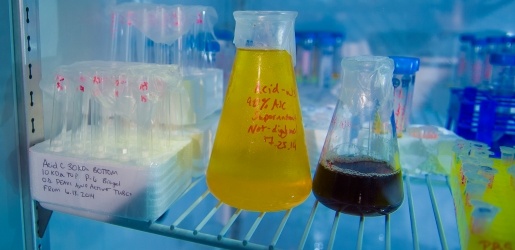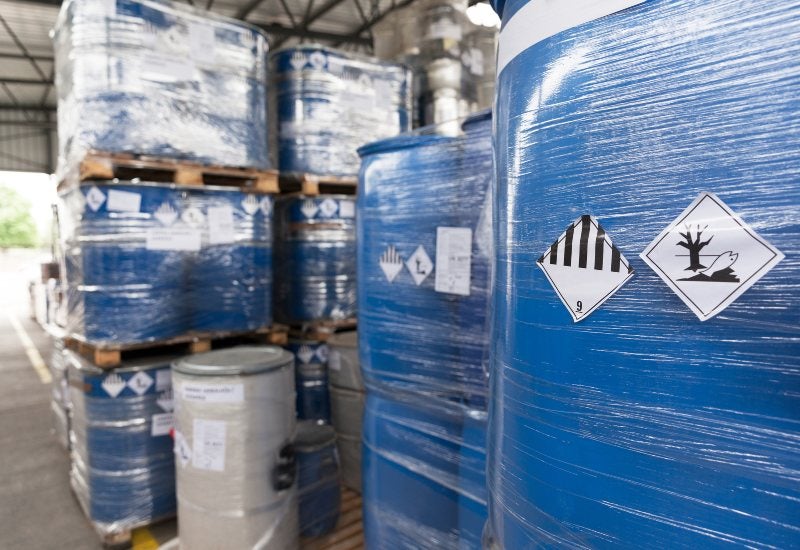Safe and Lasting Liquid Waste Disposal: Your Go-To Company
Safe and Lasting Liquid Waste Disposal: Your Go-To Company
Blog Article
How Liquid Waste Disposal Works: A Comprehensive Summary of Techniques and Technologies Used

Introduction of Fluid Waste Types
The intricacy of fluid waste kinds requires a thorough understanding of their attributes and implications for disposal. Liquid waste can extensively be categorized right into numerous kinds, including commercial, municipal, farming, and hazardous waste. Each group shows distinctive residential or commercial properties, calling for details monitoring techniques to minimize environmental and health dangers.
Industrial liquid waste originates from making procedures and frequently consists of a series of pollutants, such as hefty metals, solvents, and natural substances. Municipal fluid waste, mainly comprising wastewater from households and business establishments, consists of natural issue, nutrients, and pathogens (industrial wastewater treatment). Agricultural liquid waste, including runoff from farms, may have plant foods, pesticides, and animal waste, posing threats to water top quality and ecological communities
Harmful liquid waste is defined by its poisoning, sensitivity, or potential to trigger damage. This classification includes compounds like acids, bases, and specific chemicals that necessitate rigorous handling and disposal methods. Understanding these diverse liquid waste kinds is critical for creating efficient disposal approaches and making sure conformity with ecological laws. Correct classification and characterization are crucial for applying proper therapy strategies and reducing the adverse effect on public wellness and the setting.
Physical Therapy Methods

Testing is the preliminary step, where larger fragments and debris are gotten rid of from the fluid waste using screens or grates. In sedimentation containers, much heavier bits work out at the base, developing a sludge layer, while the clarified fluid can be further treated.
Purification is one more important method that entails passing the fluid via porous products, such as sand or membrane layers, to capture smaller sized bits. This action boosts the high quality of the fluid, making it appropriate for subsequent therapy procedures.

Chemical Therapy Methods
Chemical therapy strategies are important for successfully handling fluid waste, specifically in resolving dissolved and colloidal impurities that physical techniques might not adequately remove. These techniques make use of various chemical representatives to neutralize, speed up, or change harmful materials into much less unsafe types.
One usual method is coagulation and flocculation, where chemicals such as alum or ferric chloride are included to promote the gathering of put on hold particles. This process improves sedimentation, permitting less complicated removal of the resulting sludge. Furthermore, oxidation procedures, using agents like chlorine or ozone, are used to break down intricate natural substances and virus, providing the waste much safer for discharge or additional treatment.
Neutralization is one more important method, which readjusts the pH of acidic or click now alkaline waste streams to neutral levels, protecting against potential damage to downstream systems and the atmosphere. Furthermore, advanced oxidation processes (AOPs) use mixes of oxidants and ultraviolet light to weaken relentless toxins, achieving a greater degree of therapy effectiveness.
Organic Therapy Procedures
Organic treatment processes play a critical duty in the monitoring of fluid waste by making use of microbes to disintegrate raw material and minimize contaminant levels. These processes can be extensively classified into anaerobic and cardiovascular treatments, each employing specific microbial neighborhoods to attain efficient waste deterioration.
Cardiovascular treatment read review entails the usage of oxygen to assist in the break down of natural materials by germs. This procedure is frequently applied in triggered sludge systems, where oygenation storage tanks supply a conducive environment for microbial growth, resulting in the oxidation of organic contaminants. The resultant biomass can be divided from treated effluent with sedimentation.
On the other hand, anaerobic treatment occurs in the lack of oxygen, relying upon different microorganisms to damage down organic issue. This method is especially advantageous for high-strength waste, as it generates biogas, a renewable resource source, while reducing sludge production. Technologies such as anaerobic digesters are often used in municipal and industrial applications.
Both cardiovascular and anaerobic organic treatments not only reduce the ecological impact of fluid waste yet likewise assist in source recuperation, making them important components of sustainable waste management approaches. Their effectiveness, performance, and adaptability sustain their widespread execution across numerous fields.
Emerging Technologies in Disposal
Ingenious approaches to liquid waste disposal are swiftly evolving, driven by improvements in technology and an enhancing focus on sustainability. Amongst these arising technologies, membrane bioreactors (MBRs) have actually obtained grip for their ability to combine biological treatment with membrane layer purification, pop over here causing top quality effluent that can be reused in different applications. MBRs allow smaller sized impacts and extra efficient operations compared to traditional systems.
Another promising growth is the use of anaerobic digestion integrated with nutrient healing innovations, which not only deals with fluid waste but also creates biogas and recoups beneficial nutrients like nitrogen and phosphorus. This twin advantage boosts source performance and lowers ecological effect.
Furthermore, advanced oxidation processes (AOPs) are being adopted for the degradation of complicated organic toxins. These approaches utilize powerful oxidants and stimulants to damage down pollutants at the molecular level, supplying a very efficient service for challenging waste streams.
Moreover, the combination of fabricated knowledge and maker discovering in waste administration systems is optimizing functional effectiveness and predictive maintenance, resulting in reduced prices and enhanced environmental compliance. These technologies mirror a substantial shift in the direction of more sustainable and effective liquid garbage disposal methods.
Conclusion
In conclusion, effective fluid waste disposal requires a detailed understanding of various methods and technologies. The assimilation of physical, chemical, and biological therapy techniques makes certain the effective monitoring of diverse waste kinds. Additionally, the appearance of innovative modern technologies enhances therapy efficiency and promotes sustainability in waste monitoring practices. By continually progressing these approaches, it comes to be possible to attend to the expanding challenges connected with fluid waste, ultimately contributing to ecological protection and resource recuperation.
Liquid waste disposal is a vital facet of environmental management, requiring an extensive understanding of different methods and innovations customized to different waste kinds. Fluid waste can generally be classified right into numerous kinds, including commercial, local, agricultural, and dangerous waste. Agricultural liquid waste, including overflow from farms, may include fertilizers, pesticides, and pet waste, posing risks to water quality and environments.
Different physical treatment methods play a vital function in managing liquid waste effectively - industrial wastewater treatment.In verdict, reliable fluid waste disposal requires an extensive understanding of various techniques and technologies
Report this page